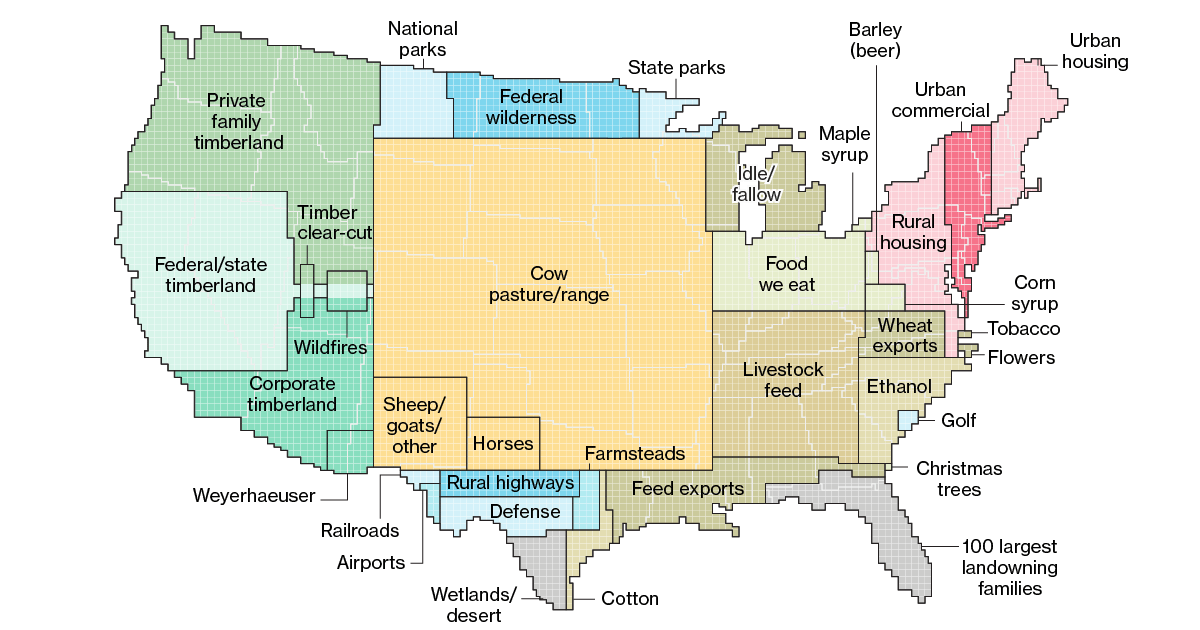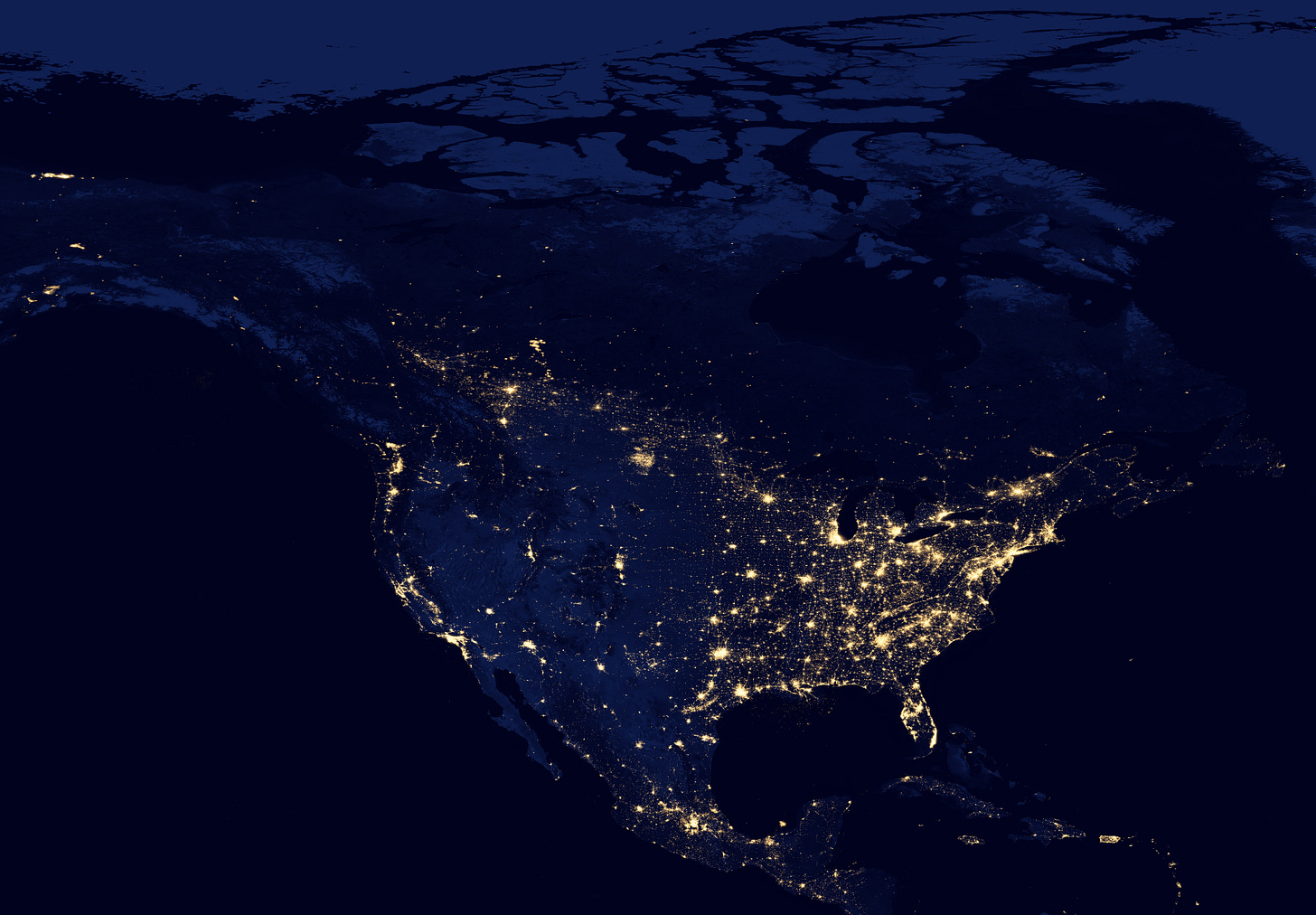Perhaps the silliest response I got on How rich would 1 billion Americans be? were comments along the lines of:
“1 billion is far too many people for the U.S., where would they all fit?”
I’ve seen similar statements made elsewhere, and sometimes they get backed up by scaling up the U.S. population based on its population density. Since the population density is 37 people/km2, with 1 billion people that’s 2.7E7 km2, larger than the area of the United States.
But these kinds of arguments ignore how land actually gets used and how urban populations scale. Take a look at how land is used in the U.S:

My first takeaway from this is oh my god we use a lot of land for cows. My second takeaway is that urban land doesn’t use that much space.
Instead of the raw population density, we want to use a metric like the population weighted density. It tries to measure the population density experienced by the typical person living in a country. In the U.S., it’s about 1269 people/km2 (PWD-M) which means that the median person lives in a density similar to Phoenix.
This is a more appropriate way to think about how much land a larger population will use because most of the new population will likely live in cities; 80% of people live in urban areas today and this fraction has been rising for a long time. Urban areas have increased in population and shrunken in size in the last decade despite zoning restrictions.
So if the typical person lived in an area with 1269 people/km2, that comes out to 195 million acres for 1 billion people; much less than the 654 million acres the cows are using today[1].
This area is about 2.8 times larger than urban land use today; how much bigger would a typical city have to be to support this growth? Let’s imagine inscribing a city in a circle with a certain average density and asking how much bigger that circle would have to get for the population to be 2.8 times larger.
In that case, the radius would only have to be 1.68 times larger. I imagine these kinds of changes happening over about a century, so that corresponds to 0.5% annual growth. These numbers would be even smaller if cities switched to denser housing as they grew or if the number of cities increased overall.
So when thinking about larger populations in a country, instead of imagining housing that spans an entire continent, imagine the points of light on this map getting inflated somewhat.

- ^
What about food production, don’t we need to scale that too? In a counterfactual world where the U.S. grows to a billion people over a century, I would be shocked if food production systems stayed exactly as inefficient as they are today. For example, corn yields have increased almost 300% in the last 60 years and recent innovations promise even more progress. Most of the map is used for growing trees and feeding livestock, I think we can replace those activities with far more efficient processes. I expect land use per person will continue to fall and food production systems can easily adjust to a larger population given a gradual transition. It’s also not necessary for the U.S. to make all of its own food.

"If everyone agreed to become vegetarian, leaving little or nothing for livestock, the present 1.4 billion hectares of arable land (3.5 billion acres) would support about 10 billion people" - EO Wilson
[though limited fishing + hunting of deer/pigeons/waterfowl could be ok]
Agreed. The US is a massive country, and we barely use any of the space we have.